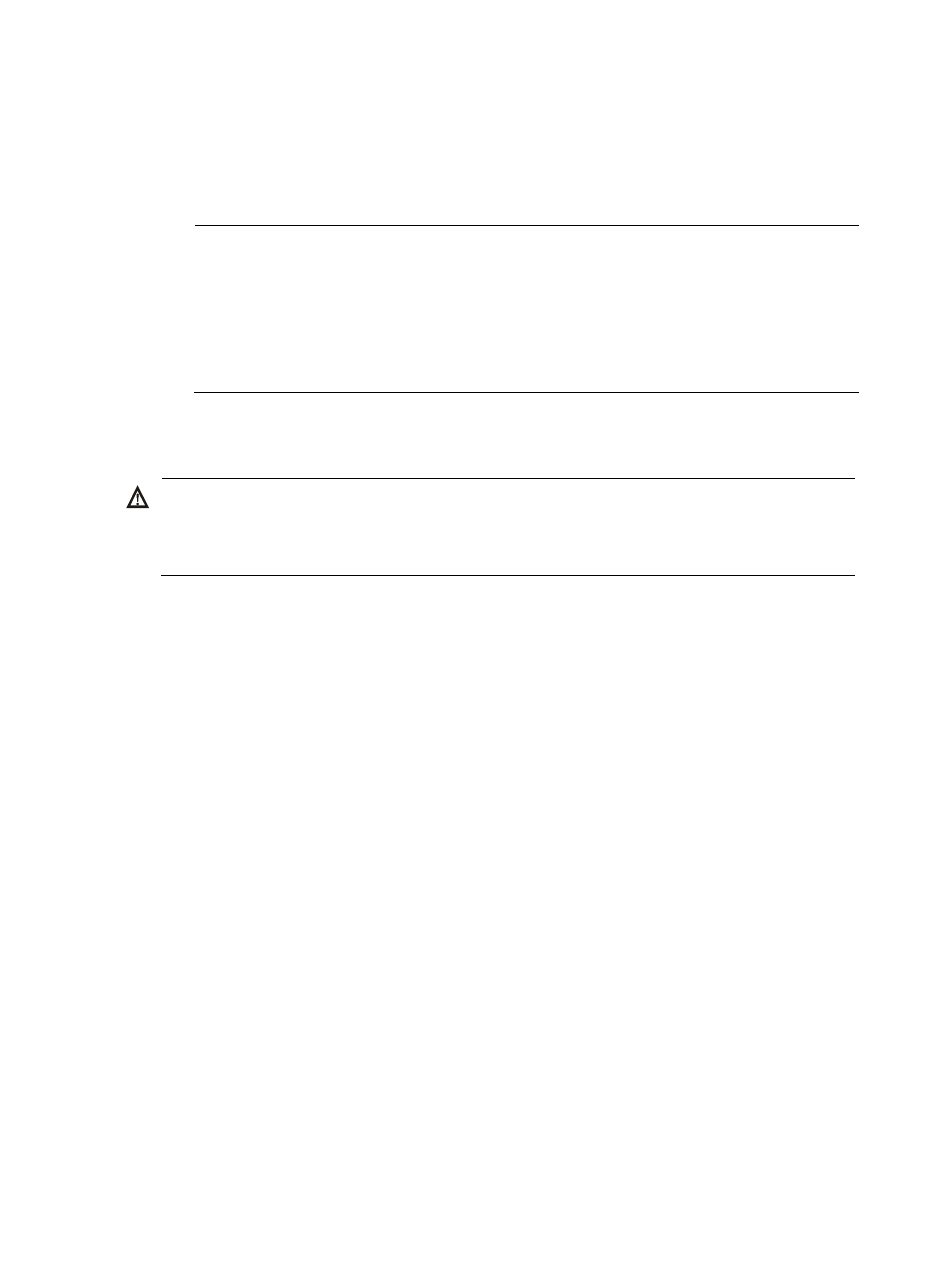Vrrp tracking, Tracking a specified interface, Tracking a track entry – H3C Technologies H3C S12500 Series Switches User Manual
Page 143

132
priority. The non-preemptive mode helps avoid frequent switchover between the master and
backups.
•
If the timer of a backup expires but the backup still does not receive any VRRP advertisement, it
considers that the master fails. In this case, the backup considers itself as the master and sends VRRP
advertisements to start a new master election.
NOTE:
•
The VRRP group configuration might be different on routers, and network problems might exist, so
multiple master routers might exist in one VRRP group. These master routers will elect one master
according to their priorities and IP addresses. The router with the highest priority wins the election.
If a tie exists in the priority, the router with the highest IP address wins.
•
After a backup router receives an advertisement, it compares its priority against that carried in the
advertisement. If its priority is higher than that carried in the advertisement, it takes over the master.
VRRP tracking
IMPORTANT:
To enable the VRRP tracking function, configure the routers in the VRRP group to operate in preemptive
mode first, so that only the router with the highest priority can always operate as the master for packet
forwarding.
Tracking a specified interface
The interface tracking function expands the backup functionality of VRRP. It provides backup not only
when the interface to which a VRRP group is assigned fails but also when other interfaces (such as uplink
interfaces) on the router become unavailable.
•
If the uplink interface of a router in a VRRP group fails, usually the VRRP group cannot be aware of
the uplink interface failure. If the router is the master of the VRRP group, hosts on the LAN are not
able to access external networks because of the uplink failure. This problem can be solved by
tracking a specified uplink interface. If the tracked uplink interface is down or removed, the priority
of the master is automatically decreased by a specified value and a higher priority router in the
VRRP group becomes the master.
Tracking a track entry
By monitoring a track entry, you can:
•
Monitor an uplink and change the priority of the router according to the state of the uplink. If the
uplink fails, hosts in the LAN cannot access external networks through the router. In this case, the
state of the monitored track entry is negative and the priority of the router decreases by a specified
value. Then, a higher priority router in the VRRP group becomes the master to maintain the proper
communication between the hosts in the LAN and external networks.
•
Monitor the master on a backup. When the master fails, the backup immediately preempts as the
master to maintain normal communication.
For more information about track entries, see "Configuring Track."